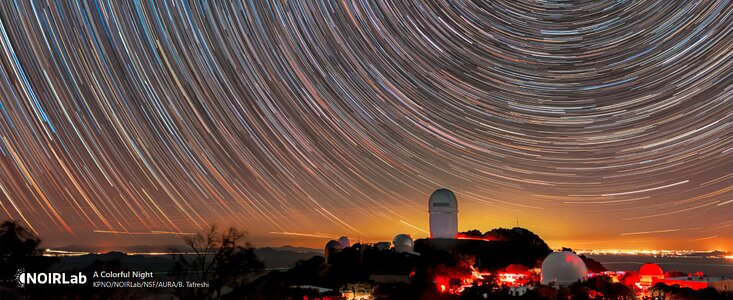Display NOIRLab’s Top Images in Your Browser
New Chrome extension shares some of the best images from NSF NOIRLab in your web browser
22 December 2021
When you open a new tab or window in your web browser, wouldn’t it be nice if that window opened onto a beautiful cosmic vista?
A new Google Chrome extension from NSF’s NOIRLab can now make that happen. Once installed, the extension randomly selects one of NOIRLab’s Top 100 images from our gallery and displays it when the user opens a new browser tab or window. In the lower-left corner of the window, the image title and credit are shown next to the NOIRLab logo. (Clicking the title will open a page on the NOIRLab website that provides more information about the image.) Simply reload the window or tab to enjoy a new randomly selected NOIRLab image.
To install the extension, visit https://chrome.google.com/webstore/search/noirlab with your Chrome browser, and explore some of the awe-inspiring images created by NSF’s NOIRLab.
More information
NSF’s NOIRLab (National Optical-Infrared Astronomy Research Laboratory), the US center for ground-based optical-infrared astronomy, operates the international Gemini Observatory (a facility of NSF, NRC–Canada, ANID–Chile, MCTIC–Brazil, MINCyT–Argentina, and KASI–Republic of Korea), Kitt Peak National Observatory (KPNO), Cerro Tololo Inter-American Observatory (CTIO), the Community Science and Data Center (CSDC), and Vera C. Rubin Observatory (operated in cooperation with the Department of Energy’s SLAC National Accelerator Laboratory). It is managed by the Association of Universities for Research in Astronomy (AURA) under a cooperative agreement with NSF and is headquartered in Tucson, Arizona. The astronomical community is honored to have the opportunity to conduct astronomical research on Iolkam Du’ag (Kitt Peak) in Arizona, on Maunakea in Hawai‘i, and on Cerro Tololo and Cerro Pachón in Chile. We recognize and acknowledge the very significant cultural role and reverence that these sites have to the Tohono O'odham Nation, to the Native Hawaiian community, and to the local communities in Chile, respectively.






